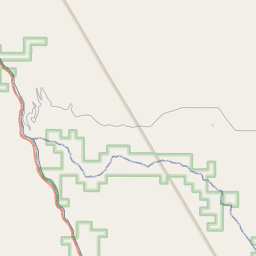Lewis and Clark
Historical marker location:
1001 West Pierce Street, Weippe, Idaho
( Marker is on West Pierce Street (State Highway 11) near West 7th Street.)







© OpenStreetMap contributors
A brief timeline of the Lewis and Clark Expedition
- 1803: President Thomas Jefferson commissions Meriwether Lewis, his personal secretary, to lead an expedition to explore the western territories of the United States and find a practical route to the Pacific Ocean.
- 1804: Lewis meets up with William Clark, a former army officer and experienced explorer, in Kentucky. They assemble a team of over 30 men and set out on the journey up the Missouri River.
- 1805: The expedition reaches the Rocky Mountains and crosses the Continental Divide. They build Fort Clatsop on the Pacific coast and spend the winter there, before returning east in the spring of 1806.
- 1806: Lewis and Clark split up to explore different routes on their way back to St. Louis. They reunite in September and return to civilization, where they are celebrated as national heroes.
- 1807: The Lewis and Clark Expedition publishes an official account of their journey, called the "History of the Expedition Under the Command of Captains Lewis and Clark," which becomes a bestseller and helps to promote westward expansion.
Idaho played a key role in the development of atomic energy. During World War II, the federal government established the Idaho National Laboratory in eastern Idaho, which was used to research and develop nuclear technology. Today, the lab is one of the leading research facilities in the world for nuclear energy and other forms of advanced technology.
About Clearwater County
Clearwater County Timeline
Established on February 27, 1911, Clearwater County is located in the northern region of the state of Idaho, USA. Before the arrival of non-native settlers, the area was inhabited by various Native American tribes, including the Nez Perce and Coeur d'Alene. European explorers, trappers, and fur traders began to venture into the region during the early 19th century.
The discovery of gold in the Clearwater River in 1860 led to a significant influx of miners, triggering the Idaho Gold Rush. The town of Pierce, now the county seat, became a strategic center for mining activities. The region experienced both booms and busts as gold deposits were depleted and new mining opportunities arose throughout the late 19th and early 20th centuries.
In the late 19th century, timber became a prominent industry in Clearwater County. The vast mountainous forests provided an abundance of resources, attracting logging companies to the area. Lumber mills began operating, contributing to the county's economic growth and development. The logging industry remains an important part of Clearwater County's economy to this day.
Clearwater County witnessed the arrival of the railroad in the early 20th century. The completion of the Northern Pacific Railroad provided a more efficient means of transportation for both people and resources, further stimulating economic activities and allowing for easier access to the county's natural resources.
With its rich mining, logging, and railroad history, Clearwater County offers a glimpse into Idaho's vibrant past. Today, it is known for its stunning natural beauty, recreational opportunities, and a blend of urban and rural communities that continue to thrive amidst its historical backdrop.
The discovery of gold in the Clearwater River in 1860 led to a significant influx of miners, triggering the Idaho Gold Rush. The town of Pierce, now the county seat, became a strategic center for mining activities. The region experienced both booms and busts as gold deposits were depleted and new mining opportunities arose throughout the late 19th and early 20th centuries.
In the late 19th century, timber became a prominent industry in Clearwater County. The vast mountainous forests provided an abundance of resources, attracting logging companies to the area. Lumber mills began operating, contributing to the county's economic growth and development. The logging industry remains an important part of Clearwater County's economy to this day.
Clearwater County witnessed the arrival of the railroad in the early 20th century. The completion of the Northern Pacific Railroad provided a more efficient means of transportation for both people and resources, further stimulating economic activities and allowing for easier access to the county's natural resources.
With its rich mining, logging, and railroad history, Clearwater County offers a glimpse into Idaho's vibrant past. Today, it is known for its stunning natural beauty, recreational opportunities, and a blend of urban and rural communities that continue to thrive amidst its historical backdrop.
Clearwater County Timeline
This timeline provides a concise overview of the key events in the history of Clearwater County, Idaho.
- 1902: Clearwater County is established on February 27 as a part of Shoshone County.
- 1911: Clearwater County becomes an independent county on January 24.
- 1930s: The Great Depression hits, leading to a decline in mining activity in the county.
- 1940s: World War II brings economic recovery with the demand for resources.
- 1950s: The construction of Dworshak Dam on the North Fork of the Clearwater River begins.
- 1973: Dworshak Dam is completed, becoming the tallest straight-axis concrete dam in the Western Hemisphere.
- 1980s: The decline of the timber industry impacts the county's economy.
- 1994: The Wild and Scenic Rivers Act designates parts of the Lochsa and Selway rivers within the county.
- 2000s: Efforts to diversify the economy include promoting tourism and outdoor activities.
- 2018: Clearwater County celebrates its centennial.